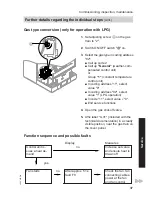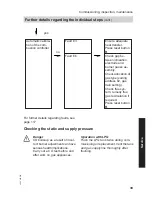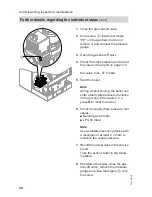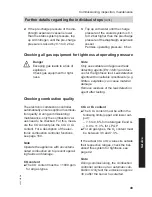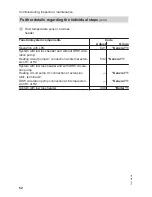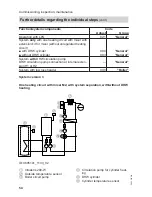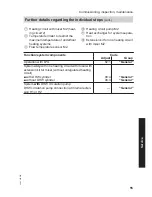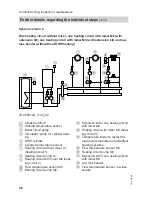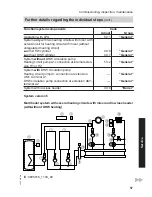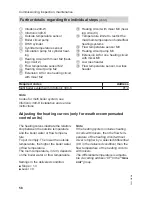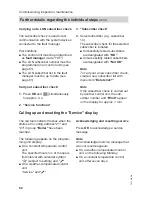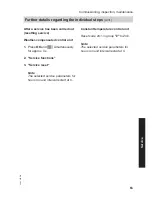
49
2.
If the pre-charge pressure of the dia-
phragm expansion vessel is lower
than the static system pressure, top
up with nitrogen until the pre-charge
pressure is raised by 0.1 to 0.2 bar.
3.
Top up with water until the charge
pressure of the cooled system is 0.1
to 0.2 bar higher than the pre-charge
pressure of the diaphragm expansion
vessel.
Permiss. operating pressure: 6 bar.
Checking all gas equipment for tightness at operating pressure
Danger
Escaping gas leads to a risk of
explosion.
Check gas equipment for tight-
ness.
Note
Only use suitable and approved leak
detecting agents (EN 14291) and devi-
ces for the tightness test. Leak detection
agents with unsuitable constituents (e.g.
nitrites, sulphides) can cause material
damage.
Remove residues of the leak detection
agent after testing.
Checking combustion quality
The electronic combustion controller
automatically ensures optimum combus-
tion quality. During commissioning/
maintenance, only the combustion val-
ues need to be checked. For this, meas-
ure the CO content plus the CO
2
or O
2
content. For a description of the elec-
tronic combustion controller functions,
see page 160.
Note
Operate the appliance with uncontami-
nated combustion air to prevent operat-
ing faults and damage.
CO content
■ The CO content must be < 1000 ppm
for all gas types.
CO
2
or O
2
content
■ The CO
2
content must be within the
following limits (upper and lower out-
put):
– 7.5 to 9.6 % for natural gas E and LL
– 9.0 to 11.3 % for LPG P
■ For all gas types, the O
2
content must
be between 3.8 and 7.3 %.
If the actual CO
2
or O
2
values lie outside
their respective ranges, check the bal-
anced flue system for tightness, see
page 42.
Note
During commissioning, the combustion
controller carries out an automatic cali-
bration. Only test the emissions approx.
30 s after the burner has started.
Commissioning, inspection, maintenance
Further details regarding the individual steps
(cont.)
5623 520 GB
Service



